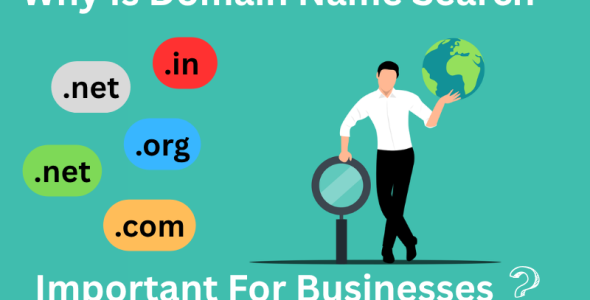Comparison of Shopify vs WordPress: Features, Costs, and More
“This comparison highlights the key differences between Shopify vs WordPress, covering features, costs, ease of use, and overall value to help you choose the best platform for your online store.”
Shopify is e-commerce royalty, but WordPress runs almost 40% of all websites. If you’re looking for an online store creator, who do you believe? Well, Shopify is the better platform all around. It includes strong sales tools and a massive app store and is an excellent choice for beginners or time-strapped entrepreneurs who want to get online quickly.
Shopify is more niche but also offers fewer customization possibilities. In contrast, WordPress.org’s open-source nature allows nearly unlimited customization of the way you build your store, provided you don’t care about the work involved. Operating your store via WordPress takes more time and is hands-on, but if you can handle the commitment, then you can make an extremely complicated site.
In general, Shopify wins out because it’s more accessible, and your store’s progress won’t be weighed down in the technicalities of maintaining your site. Instead, Shopify positions you to expand from day one and makes handling your store as effortless as possible.
Shopify vs WordPress: Comparison
Shopify

Since everything comes in a single package, Shopify is the ideal option for those who prefer an easy ride with their online shop. You can access all things from the Shopify dashboard, so you simply log in and start working.
WordPress

If you prefer your online store to be unique from the crowd or require certain specific tools, WordPress can be more suitable for you. You can go on adding new features and themes without end and make your store up-to-date, but it will take more effort.
Here’s a comparison table of Shopify vs WordPress (with WooCommerce) focusing on cost:
| Cost Factor | Shopify | WordPress + WooCommerce |
|---|---|---|
| Platform Cost | Starts at $39/month (Basic plan) | Free (WordPress.org is free to use) |
| eCommerce Plugin | Built-in Shopify platform | WooCommerce – Free, but extensions may cost extra |
| Hosting | Included in Shopify plans | ~$5–$25/month (varies by hosting provider) |
| Domain Name | ~$14/year via Shopify | ~$10–$15/year via domain registrars |
| Themes | Free & paid themes ($0–$350 one-time) | Free & paid themes ($0–$100+, one-time) |
| Transaction Fees | 0% with Shopify Payments; 2% with others | Depends on payment gateway (e.g., 2.9% + $0.30) |
| Apps/Plugins | Many paid apps ($5–$50/month per app) | Many free plugins; paid ones vary widely in cost |
| Maintenance/Updates | Handled by Shopify | User-managed (time and possible dev costs) |
| Custom Development (optional) | May require Shopify devs for custom work | May need a WordPress/Woo dev; hourly rate varies |
Summary:
- Shopify: Easier to manage, predictable monthly costs, great for those who want an all-in-one solution.
- WordPress + WooCommerce: Lower starting cost and more flexible, but may require more setup and ongoing management.
Which Has the Best Sales Features? – Shopify
E-commerce tools are what you’ll use to sell products and receive payment. With Shopify, they are built into the platform, whereas WordPress requires a plugin like WooCommerce.
Shopify is an e-commerce platform, which means it has been specifically designed with selling in its mind. As a result, all of its features and tools benefit online stores in one way or another. For example, when you initially boot up Shopify, you are prompted to begin adding your products before you get to create the site.
While WooCommerce’s selling functionality is excellent – scoring high marks in our research – it is just one plugin among many WordPress offers, so it doesn’t quite seem like the singular platform that Shopify is.
In terms of real sales features, Shopify has the best we’ve ever seen, and it tops our overall list for e-commerce website builders. We’re not going to go through them all here (there’s a detailed Shopify review for that), but here are some select favorites and what they can do:
- Abandoned Cart Recovery – Initialize your site so that it automatically sends reminders through email to the customers who start leaving your website with products within their cart before they check out.
- Discount Codes – Generate a unique code customers can redeem through your checkout to get money off. These come in handy too for use via email marketing.
- Multichannel Integration – Don’t just stay within your site; sell directly across big social media and world marketplaces, such as TikTok and Amazon.
WordPress itself has no built-in e-commerce facilities. Rather, you’ll be required to download and install an e-commerce plugin. WooCommerce is by far the best known and is bundled with all the core functions required to sell, such as:
- Sell infinite products, both physical and downloadable
- Built-in blogging facility
- Product ratings and reviews
- Sorting and filtering of products
There are other options, such as Ecwid, but next to Shopify, none is as simple to use. On the upside, they both are free to install – but as mentioned above, you’ll need more tools overall to run your store.
Who Has the Best Marketing and SEO? – It’s a Dead Heat!
Merely stocking a store with merchandise is not sufficient to drive customers to purchase it. There’s no main street promoting your store online, so you need to be loud and annoying in finding new customers, which implies marketing and SEO.
Shopify also has several built-in marketing tools available for merchants to utilize, including Shopify Email for email marketing campaigns and contact forms for lead collection. These are perfect for spreading the word about your store’s name, as are Shopify’s various social media integrations. Whether it is Instagram, Facebook, or TikTok, you can promote your store on multiple platforms.

WordPress will need plugins for the majority of its promotion, but it does have a fantastic range:
- Hubspot for CRM
- MailChimp for email marketing
- Google Ads & Listings to create advertisement campaigns
- Pretty Links for affiliate marketing
That aside, there is still the matter of having to go and do it all yourself. With Shopify, though, you can have access to it all from the dashboard – a much easier process for newbies. That being said, marketing is just half the coin. In order to get real visitors to your shop, you are going to need to ensure your site is SEO-friendly.
SEO is also difficult to learn because it relies on technical elements, such as the formatting of your site, the size of your files, and the number of outgoing links. Because of this, you can have more control over your SEO with WordPress since it is open-source. When you know what you are doing, you can adjust and customize important elements such as site speed and security limits – all of which can’t be directly accessed and modified with Shopify.
If you like having a tool do everything for you, then the Yoast SEO plugin is one of the web’s most popular SEO services. You can get it for free or subscribe to the more feature-rich version for $69 per month.
That’s not to suggest that Shopify lacks decent SEO. It aced our testing, providing you with access to SEO features such as:
- Adding and editing meta titles/descriptions – the title and snippet that show up in Google
- Personalizing URL slugs – the words that follow your domain,
- Adding alt text to images – what Google reads so it knows what your images show
- Availability of SEO best practice hints – information on how to optimize
The Verdict:
It’s a Tie! Both Shopify and WordPress have equally good marketing and SEO
While Shopify might get the upper hand over WordPress when it comes to native tools, WordPress’s open-source nature allows you access to more sophisticated methods. This is a war of precision over convenience, and as they’re both equally valuable, they both win.
Who Has the Best Templates? – WordPress
Templates (often called themes) are the standard layout of your website. Rather than having to begin from scratch, you can build your site from an example, having a clearer idea of what you should be working towards.
Shopify offers more than 100 themes for you to choose from, but unfortunately only 12 of these are free, with the remaining 60+ costing from $140. That’s expensive, but it’s a one-time payment that brings your site to life.
Notably, these are all mobile responsive, so your site layout will adjust automatically to different screen sizes when users are browsing using their phone or tablet. More than 60% of world internet traffic this year has come from mobile, so it’s not something that should be overlooked.

In terms of options, WordPress far surpasses Shopify. WordPress has more than 11,000 themes – of which 1,000 are ecommerce-specific alone. There are also many more themes that plugins such as WooCommerce either offer themselves or that third-party developers create.
WordPress has just made this simpler in its version update 6.3 with the addition of ‘Patterns. These are pre-designed blocks in some styles, which you can insert and delete as a single unit in sync across all your other pages.
Of course, with so many to choose from, some WordPress themes are superior to others. Not all are mobile-friendly, and the ones that are not created by WordPress itself can conflict with the platform when it comes time for updates. But with more than 11,000 to sort through, you are sure to find one you like.

The Verdict
WordPress has superior templates.
While Shopify’s templates are certainly good for online stores, only having 12 options for free means your site will look similar to others (unless you’re willing to shell out). WordPress, with its wider choice of themes and more options for free, makes it the winner this round.
Conclusion
In this battle of e-commerce platform vs open source, there can only be one winner. Overall, Shopify is our recommendation for those seeking to build an online store. Not only are its sales features the best we’ve tested, but the convenience of having everything in one place can’t be overstated, especially for newcomers.
With WordPress, your success relies solely on which plugins you choose to utilize. If you need an online store, you will likely need to utilize WooCommerce. To view how we ranked WooCommerce vs Shopify in particular, check out our article.

 My Account
My Account 

